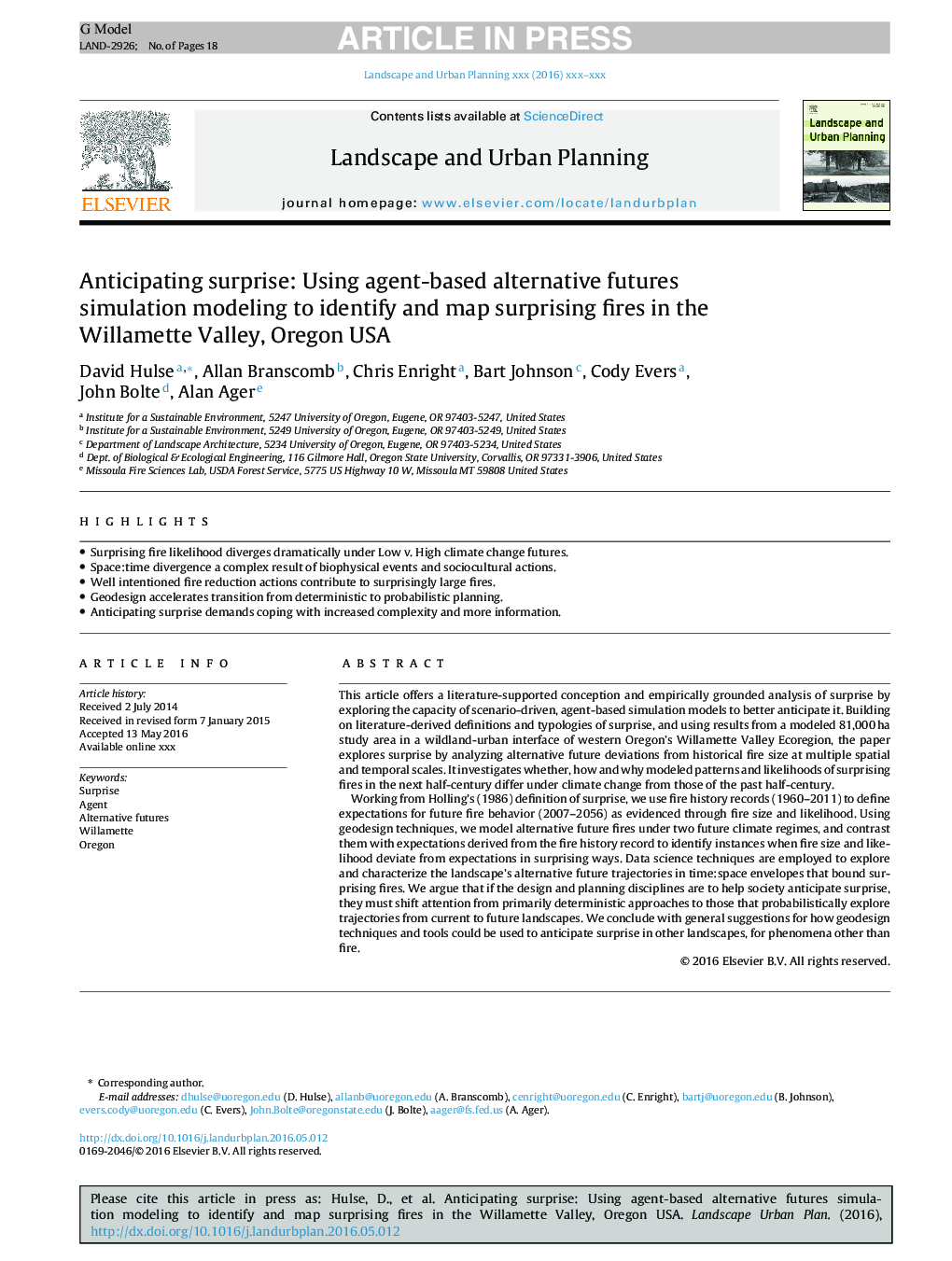| Article ID | Journal | Published Year | Pages | File Type |
|---|---|---|---|---|
| 5115095 | Landscape and Urban Planning | 2016 | 18 Pages |
Abstract
Working from Holling's (1986) definition of surprise, we use fire history records (1960-2011) to define expectations for future fire behavior (2007-2056) as evidenced through fire size and likelihood. Using geodesign techniques, we model alternative future fires under two future climate regimes, and contrast them with expectations derived from the fire history record to identify instances when fire size and likelihood deviate from expectations in surprising ways. Data science techniques are employed to explore and characterize the landscape's alternative future trajectories in time:space envelopes that bound surprising fires. We argue that if the design and planning disciplines are to help society anticipate surprise, they must shift attention from primarily deterministic approaches to those that probabilistically explore trajectories from current to future landscapes. We conclude with general suggestions for how geodesign techniques and tools could be used to anticipate surprise in other landscapes, for phenomena other than fire.
Related Topics
Life Sciences
Agricultural and Biological Sciences
Ecology, Evolution, Behavior and Systematics
Authors
David Hulse, Allan Branscomb, Chris Enright, Bart Johnson, Cody Evers, John Bolte, Alan Ager,
